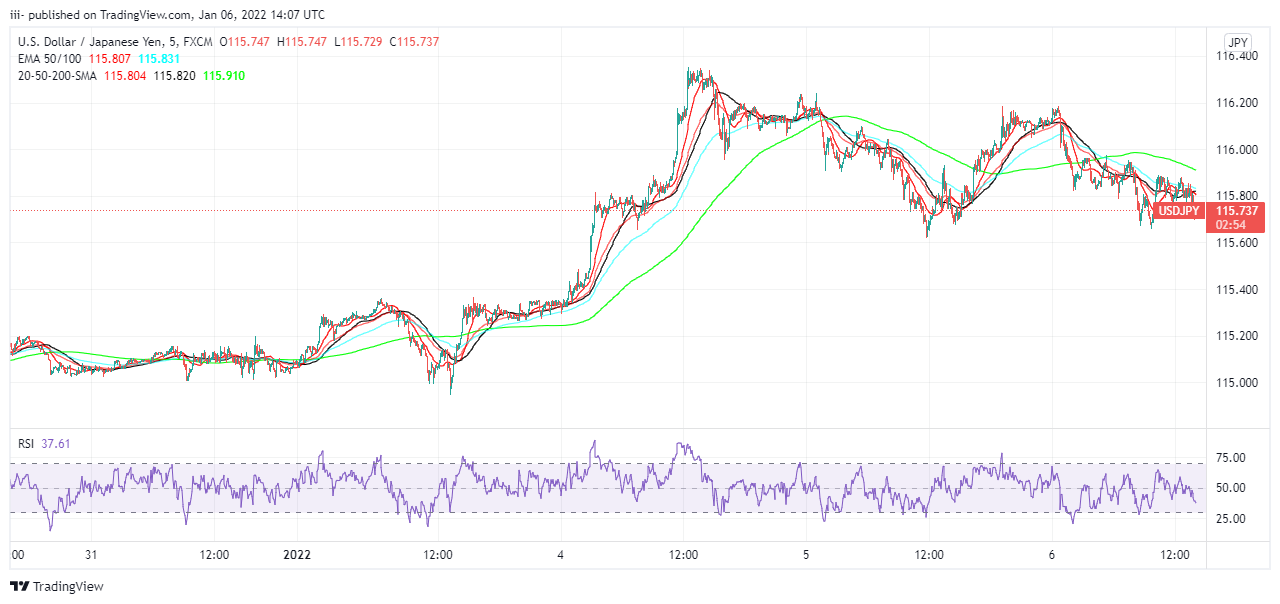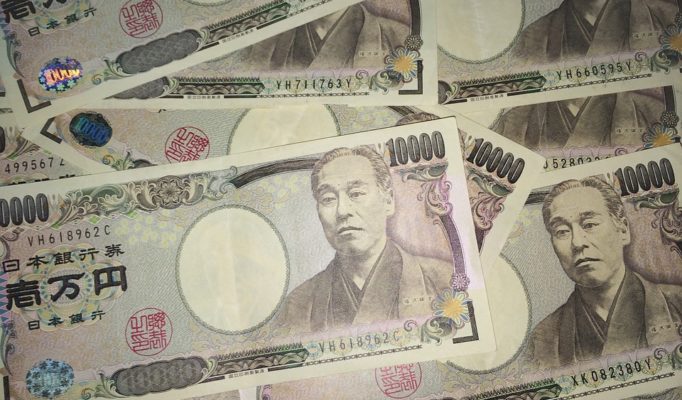Investors are now looking forward to the release of economic data from the United States to identify potential short-term price action. The relatively secure JPY benefited from the risk-off sentiment, further selling at the USD/JPY cross.
Rising US bond rates have maintained the USD’s support and should prevent the currency from slipping further into a bear market.
An Overview Of The Technical Aspects

USD/JPY CHART Source: Tradingview.com
While the European session began, the USD/JPY exchange rate continued on the defensive, and it was last observed lingering at the daily trough, just under the 116.00 round-figure line.
The duo struggled to profit on the former day’s hawkish FOMC minutes-inspired late surge from the 115.60 zone and came under some further selling stress on Thursday as the market remained under pressure.
An Overview Of The Fundamentals
The relatively secure Japanese Yen benefited from the risk-off sentiment, reflected in a generally worsening tone throughout the stock markets.
However, the USD/JPY pair came under some pressure due to the risk-off sentiment. On the other hand, the downside is being cushioned by a healthy increase in demand for the US Dollar.
The minutes of the Federal Open Market Committee’s monetary policy meeting on December 14-15 showed that the US monetary authority might raise interest rates sooner than planned to tackle excessive inflation.
The Federal Reserve will end its monthly asset purchases in March, and money markets are pricing in an 80% chance of liftoff shortly. This, in turn, increased the rates on US Treasury bonds, which supported the Dollar and provided some support for the USD/JPY pair.
The 2-year notes in the United States, which are particularly sensitive to forecasts of rate hikes, and the 5-year notes, have risen to a nearly two-year high. Furthermore, according to Bloomberg, the yield on the benchmark 10-year US government bond soared to its highest point since October.
In contrast, the yield on the 10-year JGB has remained close to zero as a result of the Bank of Japan’s yield curve management strategy. The widening yield spread between the United States and Japan further limited the negative for the USD/JPY pair.
In addition, the fundamental background favors the possibility of some dip-buying at lower levels, which would be beneficial to optimistic traders.
In order to establish that the USD/JPY pair’s current bullish surge to a five-year peak has lost momentum and to prepare for any serious corrective decline, it would be wise to wait for any follow-through selling.
Market players were now looking forward to the US economic calendar, which included the publication of the regular Weekly Preliminary Unemployment Numbers and the ISM Services PMI, both of which were scheduled to be released later during the first North American session.
This, together with the yields on US government bonds, should impact the USD’s market dynamics and offer a new push to the USD/JPY cross. In addition, traders will look to the broader market risk mood for clues on where they should look for chances in the short term.

















